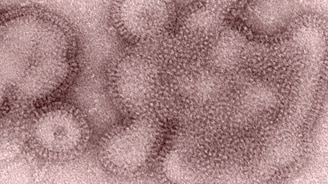# 6471
We’ve got an update from the CDC on the latest case counts and some background on the ongoing saga of the H3N2v swine flu virus (for more, see my blog A Variant Flu Review).
This week, 12 new confirmed cases have been identified across three states. Additional suspected cases are under investigation.
Here are excerpts the latest press release, follow the link to read it in its entirety:

CDC Reports Cases 18-29 of H3N2v Virus Infection; Continues to Recommend Interim Precautions When Interacting with Pigs
August 3, 2012 –This week CDC reports 12 additional human infections with influenza A (H3N2) variant* virus in 3 states: Hawaii
(1 case), Ohio
(10 cases) and Indiana
(1 case). The H3N2v virus contains the M gene from the human influenza A(H1N1)pdm09 (2009 H1N1) virus, as have the previous 17 cases detected since July 2011. All of this week’s reported cases occurred in people who had direct or indirect contact with swine prior to their illness.The 10 cases in Ohio were associated with attendance at a fair where reportedly ill swine were present. The H3N2v case reported by Indiana also occurred in a person who attended a fair where swine were present. CDC continues to recommend preventive actions people can take to make their fair experience a safe and healthy one.
The number of cases of infection with H3N2v viruses with the M gene from the 2009 H1N1 virus detected in the United States since July 2011 now totals 29 [Hawaii (1), Indiana (7), Iowa (3), Ohio (10), Maine (2), Pennsylvania (3), Utah (1), and West Virginia (2)]. Twenty-three of these cases reported swine contact prior to illness onset. Among those 29 cases, 19 cases were associated with fairs where swine were present. Most human illness with H3N2v virus infection has resulted in signs and symptoms of influenza (fever, cough, runny nose, sore throat, muscle aches); 3 hospitalizations have occurred. All of the people hospitalized had high risk conditions. (See "people who are at greater risk of serious influenza-related complications" below.) All H3N2v virus cases have recovered fully.
According to USDA, swine influenza surveillance, this swine H3N2 virus with the pandemic M gene has been detected in swine in a number of U.S. states. This virus may be circulating widely in U.S. swine at this time. It should be noted, however, that influenza viruses have not been shown to be transmissible to people through eating properly handled and prepared pork (pig meat) or other products derived from pigs.
It is possible that acquisition of the M gene from the 2009 H1N1 virus may allow H3N2v viruses to be more transmissible from pigs to people and from person-to-person.
Late summer is typically fair season across the United States, and fairs are a setting that can provide many opportunities for exposures to occur between pigs and people. CDC continues to advise people to take recommended precautions when interacting with pigs or their environments, including frequent hand washing and avoiding contact with pigs that appear ill. The National Association of State Public Health Veterinarians has developed the "Compendium of Measures to Prevent Disease Associated with Animals in Public Settings, 2011
" to provide some preventive actions that are applicable to people raising swine, showing swine at fairs, or attending fairs.
Hopefully we’ll get have more details later today on some of these `suspected’ cases.
Related Post:
Widget by [ Iptek-4u ]